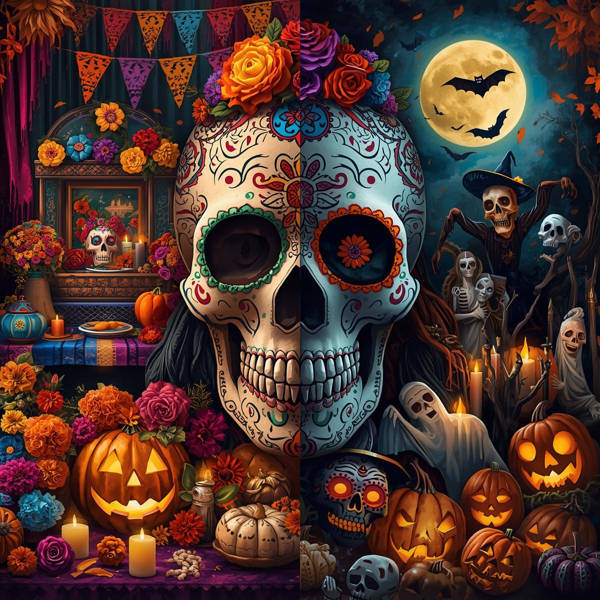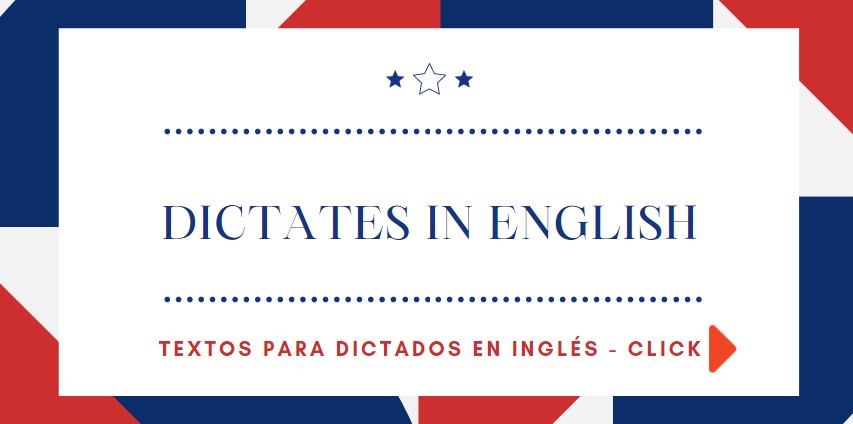
Every autumn, two of the world’s most iconic celebrations of death take place: Día de Muertos in Mexico and Halloween in the Western world. At first glance, they seem similar — both involve costumes, skulls, and night-time rituals. But behind the colorful makeup and pumpkin lanterns lie profoundly different worldviews about life, death, and the beyond.
In this article, we’ll explore the historical roots, the symbolic meaning of death, and the impact of globalization on these two traditions. By the end, you’ll see why Día de Muertos and Halloween, though often confused, reflect two contrasting cultural philosophies about mortality.
🌌 1. Ancient Roots: Celts vs. Mesoamericans
To understand the difference between Halloween and Día de Muertos, we must first go back thousands of years — to Celtic Europe and pre-Hispanic Mexico.
🍂 Halloween and Its Celtic Origins
Halloween traces its roots to Samhain, the Celtic festival marking the end of the harvest and the beginning of winter (around October 31st to November 1st). Celts believed that during Samhain, the veil between the living and the dead was at its thinnest, allowing spirits to cross into the world of the living.
Fires were lit to ward off harmful entities, and people wore costumes or masks to confuse wandering spirits. Food offerings were placed outside homes as a way to appease the dead.
Later, with the spread of Christianity, Samhain was merged with All Hallows’ Eve (the night before All Saints’ Day). Over time, this religious observance evolved into the Halloween we know today, shaped by European immigrants in the United States and popularized through consumer culture.
🌺 Día de Muertos and Its Mesoamerican Legacy
In contrast, Día de Muertos comes from indigenous Mesoamerican traditions, particularly the Aztec, Maya, and other Nahua cultures. For them, death was not an end but a natural continuation of life. The dead were believed to travel to the underworld (Mictlán), and rituals honoring them were essential for maintaining cosmic balance.
The Aztecs celebrated a month-long festival dedicated to the goddess Mictecacihuatl, the “Lady of the Dead,” during which offerings of food, flowers, and incense were made. After the Spanish conquest, these indigenous rituals merged with Catholic All Saints’ and All Souls’ Days (November 1st and 2nd), resulting in the modern Día de Muertos.
Unlike Halloween’s emphasis on fear and protection, Día de Muertos is a celebration of reunion and remembrance — where families welcome back their deceased loved ones for a night of joy.
💀 2. Death as Symbol: Fear vs. Familiarity
At the heart of the difference between Halloween and Día de Muertos is how each culture views death.
🎃 Halloween: Death as Fright
Halloween’s imagery — skeletons, ghosts, vampires, zombies — is designed to provoke fear or thrill. It reflects a cultural attitude where death is something mysterious, frightening, and even taboo.
Western societies, influenced by centuries of Christian thought, often see death as a punishment or final judgment, which explains the fascination with the macabre, the haunted, and the monstrous.
Costumes and horror movies during Halloween embody this perspective. Death is not embraced — it is dramatized, mocked, or turned into entertainment.
🌼 Día de Muertos: Death as Family
By contrast, Día de Muertos represents a worldview where death is an integral part of life. Rather than fearing it, Mexicans traditionally laugh at it, embrace it, and even celebrate it.
The iconic calaveras (sugar skulls), the pan de muerto, and the cempasúchil flowers symbolize joy and remembrance. Families build ofrendas (altars) decorated with food, drinks, photos, and personal items to guide the souls back home.
Instead of fear, Día de Muertos conveys nostalgia, warmth, and love — a ritual that connects the living and the dead in a cycle of continuity.
🌍 3. Globalization: When Traditions Meet
In today’s interconnected world, Halloween and Día de Muertos are no longer confined to their original regions.
🎃 Halloween’s Global Reach
Thanks to Hollywood, advertising, and the entertainment industry, Halloween has become a global phenomenon. From Europe to Asia to Latin America, children dress up, carve pumpkins, and go trick-or-treating.
This export, however, often emphasizes the commercial side — costumes, candy sales, haunted houses — rather than the spiritual or historical roots of Samhain.
🌺 Día de Muertos on the World Stage
Meanwhile, Día de Muertos has gained international recognition, especially after being declared an Intangible Cultural Heritage of Humanity by UNESCO in 2008. Movies like Coco (2017) and The Book of Life (2014) brought its symbolism to global audiences.
Interestingly, in places like the United States, both celebrations often coexist. Mexican-American communities honor Día de Muertos with altars and parades, while also participating in Halloween festivities. This blending highlights how traditions adapt and survive in multicultural societies.
🌀 A Shared Influence
Globalization has also led to cross-pollination between the two holidays. In Mexico, Halloween customs like trick-or-treating (calaverita) have merged with Día de Muertos. In the U.S. and Europe, Día de Muertos imagery — such as face-paint skulls and marigolds — increasingly appears in Halloween events.
🔮 4. Symbols That Tell Stories
Both holidays use powerful visual symbols — but they express different messages.
- Pumpkins vs. Marigolds: The jack-o’-lantern, born from Celtic folklore, is meant to scare away spirits. The cempasúchil flower, on the other hand, guides the souls of the dead with its bright color and scent.
- Ghosts vs. Ancestors: Halloween ghosts are frightening strangers. Día de Muertos spirits are beloved family members welcomed back home.
- Masks vs. Skulls: Halloween masks disguise and protect. Día de Muertos skulls (calaveras) celebrate life’s cycle with humor and color.
These contrasting symbols show how two cultures approach mortality in opposite ways: one with fear and disguise, the other with humor and remembrance.
📈 5. Economics of Death: From Sacred to Market
Both Halloween and Día de Muertos have deep spiritual roots, but they’ve also become major economic events.
- In the United States, Halloween spending reached over $12 billion in 2023, with costumes, candy, and decorations driving sales.
- In Mexico, Día de Muertos generates significant revenue through tourism, crafts, and gastronomy, especially in regions like Oaxaca and Michoacán.
Here we see another convergence: capitalism’s ability to transform rituals of death into opportunities for consumption. Yet, despite commercialization, both traditions preserve their symbolic power.
🌟 6. Two Visions, One Humanity
At their core, Halloween and Día de Muertos are two ways of confronting the same universal mystery: death.
- Halloween reflects a culture that externalizes and dramatizes fear of the unknown.
- Día de Muertos reflects a culture that integrates death into everyday life, seeing it as continuation rather than rupture.
Both reveal how humans use ritual to give meaning to mortality — whether through fear, laughter, or remembrance.
And perhaps that’s why these traditions endure and adapt: they remind us that even in our differences, the need to face death together is universal.
📚 Sources
- BBC – The Origins of Halloween
- National Geographic – Día de Muertos: Why It’s Different from Halloween
- Smithsonian Magazine – Samhain and the Celtic Roots of Halloween
- UNESCO – Intangible Cultural Heritage: Día de Muertos
- History.com – Day of the Dead vs. Halloween
- Mexican Government (Gob.mx) – Historia y tradición del Día de Muertos

